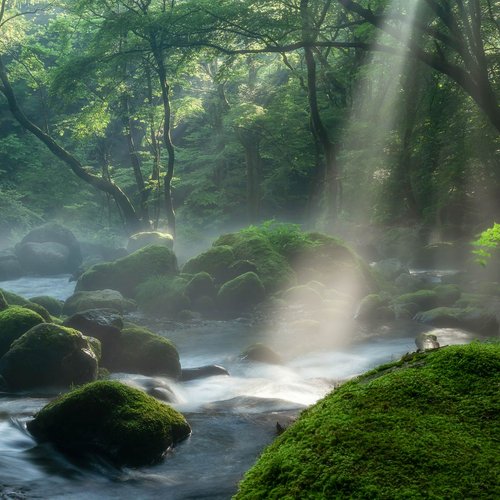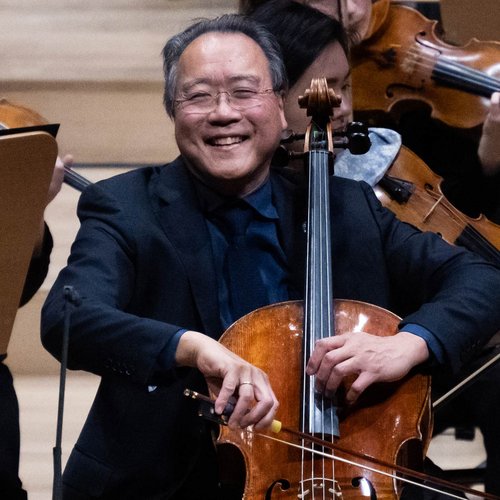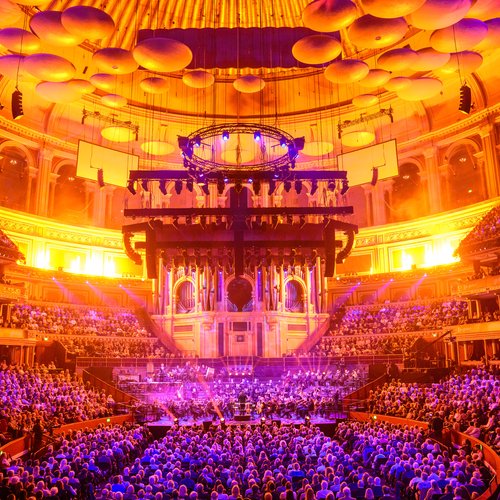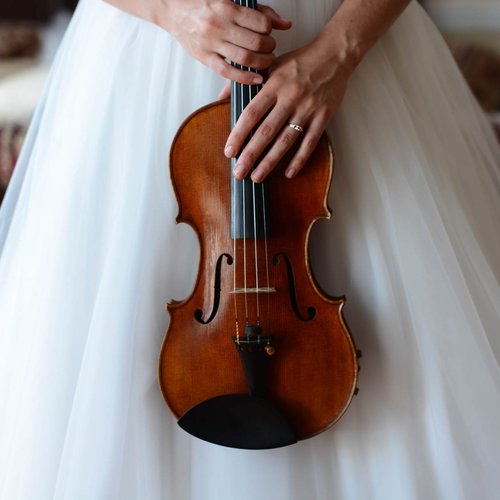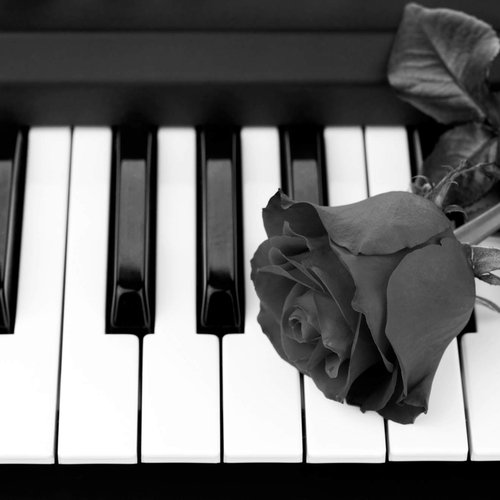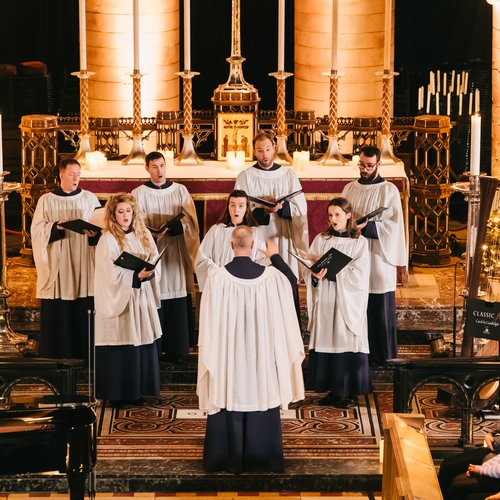Six pieces of festive music that aren’t actually about Christmas at all
29 November 2024, 15:38 | Updated: 29 November 2024, 15:53

Turns out a lot of the Christmas music you know and love was never meant to be Christmas music at all.
Listen to this article
As we cosily sidle into the festive period, the sound of Christmas music is everywhere. Whether it is the supermarket, the local café or on your favourite radio station (Classic FM, obviously), it’s impossible to avoid the happy tidings of seasonal cheer.
The ingredients of a good classical piece of Christmas music seem to be unanimous: brass chorales, chiming bells and lush strings all do the trick nicely. Add in a soothing voice, and you’ve got a veritable Christmas feast.
But sometimes these ingredients exist in pieces that have absolutely nothing to with Christmas. We look at some of the most famous pieces of ‘Christmas music’ that aren't really festive at all...
Read more: The 30 greatest Christmas carols of all time

What makes the perfect Christmas carol? We asked choral composing legend John Rutter
-
Humperdinck: Hansel and Gretel Overture
Ok, we’ll admit: the opening horn chorale has the warmth of mulled wine, the harmonies are crunchy enough to crack open your festive nut selection, and the sparkling trumpet solo seems to express something so essentially ‘Christmassy’ that you would be totally forgiven for assuming that Hansel and Gretel is a Christmas piece of music, cropping up in festive orchestral concerts worldwide.
However, the actual opera has absolutely nothing to do with Christmas. Instead it’s an adaptation of the Brothers Grimm fairy tale which deals with themes of grit, survival, sibling companionship and genuine witchy peril. Presents and Christmas trees are replaced by summer sausage and cheddar cheese.
Not to mention, Hansel and Gretel would freeze to death in the woods if it was set around Christmas time.
There is however a tenuous link from which Humperdinck fans may take some solace. It seems the origins of the operatic adaptation are firmly rooted in the December holiday period of 1889 when his sister Adelheid was producing a Christmas puppet show for all the good children. She naturally asked her brother to write a few songs for the show; these later formed the basis for some of the big hits in the opera. As a result, Gingerbread houses are now associated with Christmas!

Hansel & Gretel Prelude-Chorale | BSO and Gewandhausorchester Horns
-
Prokofiev: ‘Troika’ from Lieutenant Kijé
This one is deceptively Christmassy. A jolly melody, sleigh bells, pizzicato strings and a pulsating ostinato accompaniment: surely this must be an absolute Christmas banger?
Wrong!
The principal melody of this piece is taken from an old Hussar song, for which Prokofiev provided an optional baritone part. The melody first appears in a slow and somewhat dissonant statement, after which the pace quickens to give the impression of a fast winter's journey using the troika, a traditional Russian three-horse sledge.
Ok, so a sledge ride sounds like Christmas, but really this piece is just about winter, which in Russia is basically half of the year. Next!

Prokofiev: Troika · Sokhiev / Berliner Philharmoniker
-
Handel: Messiah
Whilst one might be able to logically see why the previous two pieces have been adopted into the Christmas cannon, Handel’s Messiah really is a perplexing outlier. Whilst the first part is about the birth of Jesus, the rest of the piece has nothing to do with Christmas at all, as Handel intended it to be a piece of sacred music for Easter, giving the premiere of the piece in Dublin, in April 1742.
As the title implies, it’s about the life and death of one Jesus Christ, so the fact that it would be performed during a holiday that focuses on his final days is fitting. Less mulled wine and more chocolate bunnies.

Händel - Messiah: Hallelujah! (Simon Rattle, Berlin Philharmonic & Choirs) | Gala from Berlin, 2004
-
Rodgers and Hammerstein: ‘My Favourite Things’ from The Sound of Music
For those who somehow haven’t seen this classic movie adaptation, spoiler alert: it has absolutely nothing to do with Christmas. Yet, over the years, it has been so completely tied to the festive season that imagining Christmas time without Julie Andrews’ dulcet tones is the musical equivalent of not having cranberry sauce on the Christmas spread. It’s quintessentially essential.
Read more: 12 best movie adaptions of musicals, ranked
The main reason why this classic is associated with this time of year is purely down to it having a cheap royalty fee, meaning back in the days of early television, it was used by networks to play repeatedly to give their staff the day off. So, whilst it does provide the perfect soundtrack to sing along to, it has nothing to do with Christmas. Sorry.

My Favorite Things from The Sound of Music (Official HD Video)
-
Schubert: Ave Maria
While it is admittedly about Mary, mother of Jesus, this sublime piece by Schubert was intended for year-round appreciation. However, it has become yet another piece of music that has been plucked from the canon to serve as a fireside warmer.
The beauty of the melody and harmony combined with the reverent simplicity of the music bears a strong resemblance to Adolphe Adam’s enduringly popular Christmas hit ‘O Holy Night’.
Adam wrote his famous carol (which is a Christmas piece) in 1847, 22 years after Schubert’s composition, so he was likely influenced by it, which perhaps gives us a better explanation as to why Ave Maria is carted out so shamelessly during the period.

Aled Jones sings sublime ‘Ave Maria’ duet with his younger self in London church
-
Beethoven: ‘Ode to Joy’ from Symphony No.9
Arguably the most unusual of all Christmas appropriations comes from Japan, where the ‘Ode to Joy’ from Beethoven’s 9th Symphony has become a Christmas carol.
The background to this was the aftermath of the First World War when a cobbled-together performance of Beethoven’s Ninth moved the Japanese people to such an extent that it spawned a beloved tradition that is still used to ring in the New Year.
During the festive period, singalongs of ‘Ode to Joy’ take place throughout Japan in venues as varied as shopping malls to community centres and it is firmly rooted in the nation’s Christmas period playlist.
Read more: Monumental sound as 10,000-strong Japanese megachoir sings Beethoven’s ‘Ode to Joy’

Beethoven - Symphony No.9 (10000 Japanese) - Freude schöner Götterfunken
























